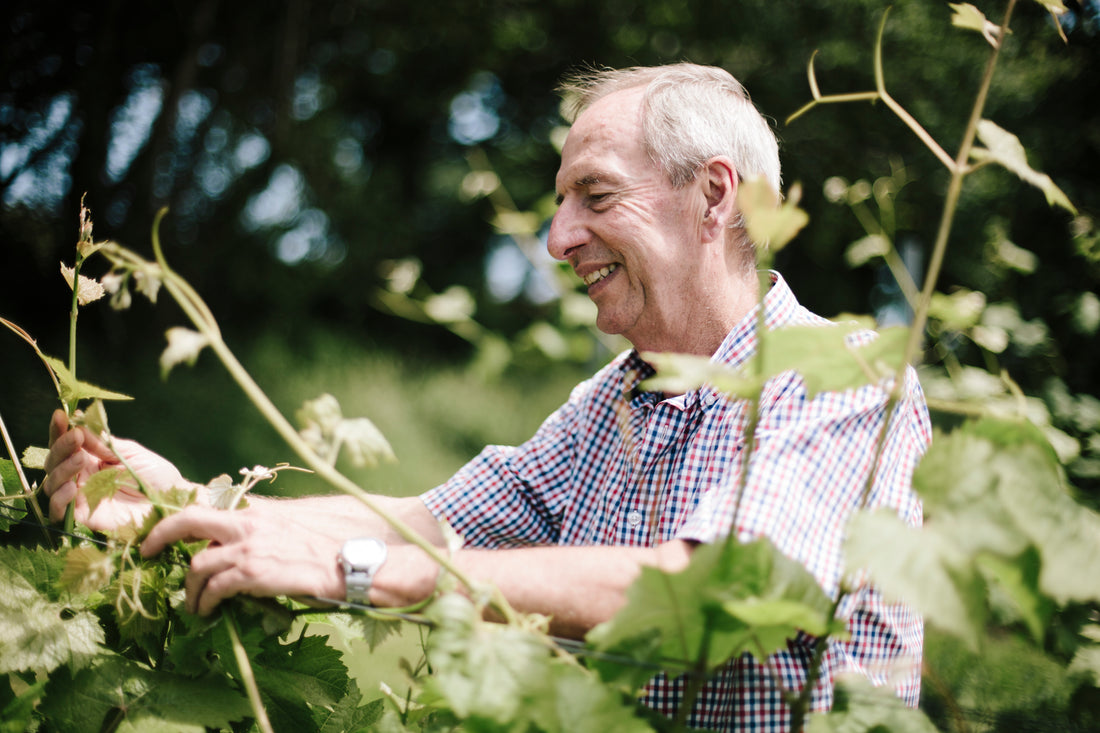CAMEL VALLEY VINEYARD INTERVIEW
In the ninth of our English Vineyard Focus interviews we catch up with Sam at Camel Valley who explains that luck, timing and terroir all came together for this English vineyard.
Hi Sam, welcome to The English Wine Collection’s English Vineyard focus. Before we begin the interview could you provide some background on the vineyard team at Camel Valley. What’s the story behind the collective experience at the vineyard? Why did you get involved in English wine?
My parents were struggling to make ends meet farming sheep as our farm isn’t very good for growing grass; it is too dry and on a steep south facing slope. They thought they would plant vines without knowing anything and the rest is history. They didn’t even know much about wine let alone English Wine.
Why is there a vineyard at Camel Valley, what’s unique about your location and the ‘terroir’?
As they didn’t know much about wine they weren’t trying to make any style of wine in particular. They put the grapes through the standard process which is the same around the world and our style if white wine is what came out. Although this was the complete opposite to a 1980’s Californian Chardonnay people liked it. Now this is the most sort after style of white wine due to global warming.
Camel Valley is billed as Cornwall’s largest vineyard, exactly how big is the vineyard and how many different grape varieties do you grow?
One third of our production is grown at our winery here in Cornwall. We have 7 hectares of vines growing mainly Seyval, Pinot Noir, Bacchus and Dornfelder. We have a small amount of Chardonnay, Rondo and Reichesteiner.
Camel Valley has built up a reputation of producing some of the finest wines in England winning many awards. What do you think is key to producing award wining English wines?
We have a really simple straight forward approach to winemaking. No barrels, no malo’s no messing about. This means we retain all of the naturally english fruit charactors.

All the English vineyards are in close proximity to the coast. How do you think our maritime environment effects your wines?
Actually we are the furthest away from the sea that you can be in Cornwall so we are warmer in the summer. However for the rest of the UK there is much less frost risk nearer the sea.
If we came down to visit the vineyard and winery, what can we expect to find?
A really beautiful setting, a lovely sun terrace overlooking the vineyard where you can enjoy wines by the glass. Our tours tell you everything about how we make the wines and are really down to earth. All of the process is carried out on site and the tour will take you through the winery and bottle store.
Despite the soaring popularity of English wines and phenomenal industry recognition, the general public is still unsure where to start. What would be your advice to a new comer when exploring English wines?
Come and visit us, do a tour and taste some wine. That is what we have been doing for almost 30 years and people seem to be fine with that.
It’s great to see that your wines are now being served on British airways, how did this come about?
They put out a tender, we applied. They then take everyone’s wine up in the air and the one that tastes the best is the one they choose. There is no way we could plan for how our wine tastes at 10km in the sky but it did taste the best.
What are the plans for the future?
I don’t think our wines would be any better if we were any bigger so we are happy to stay this size. This has it’s own challenges when everyone wants to taste our wine. Our main challenge is for my great grandchildren to be answering this questionire in 100 years time. There are not many businesses that can say that.
Anything else you think we should know?
There is one thing we are looking forward to. We have been squirrelling away some good quantities of all of our wines from 2004 onwards. We are launching the concept of the extra dimension that nobody talks about with English Wines, which is just how well they age. They really age incredibly well with the low pH and delicate primary fruit in the young wines.





